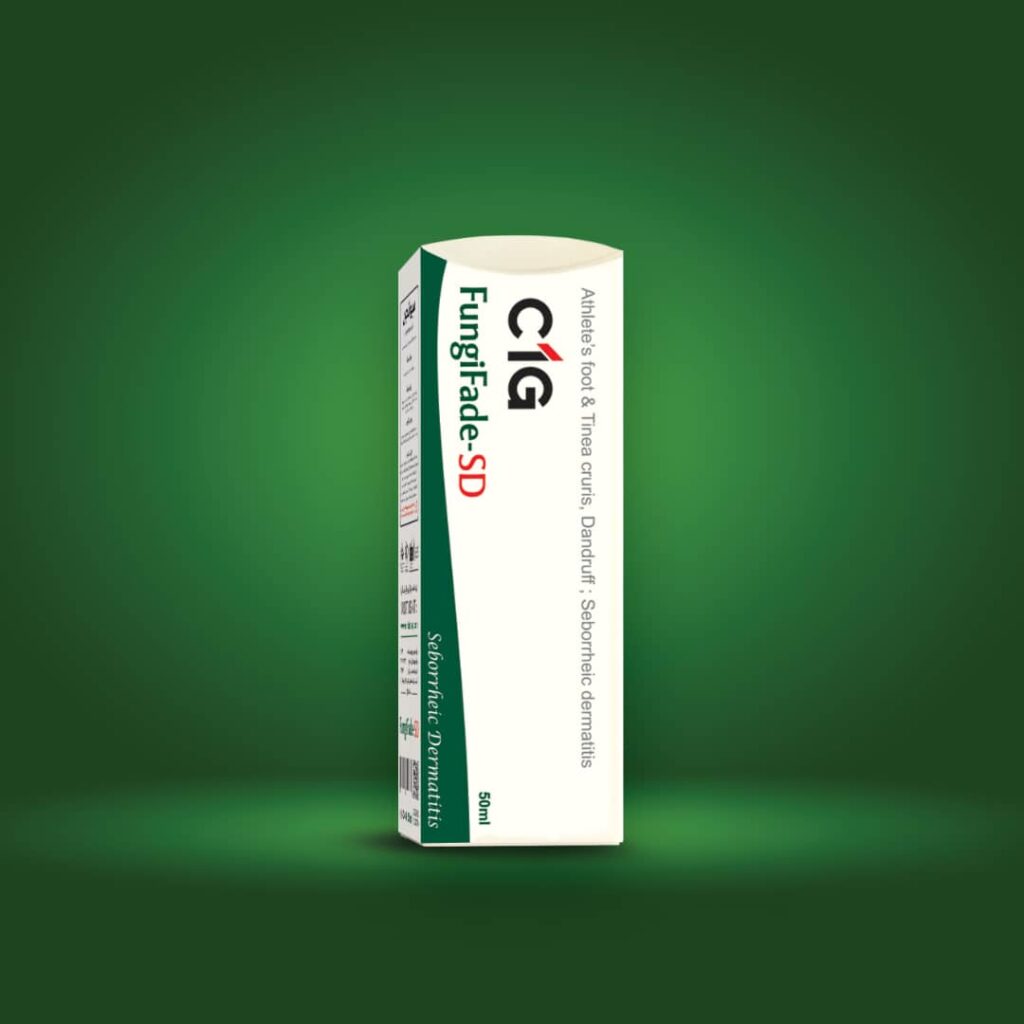fungifade-sd
FUNGIFADE - (SD)

Seborrheic dermatitis (SD) is a common papulosquamous skin disease occurring predominantly in infancy and middle age, exhibiting distinct variations across these age groups. Characterized by folliculocentric salmon-colored papules and plaques with a fine white scale and a yellowish crust (often described as a greasy scale-crust), SD manifests diversely across different body areas and may present in multiple locations. Because it often resembles other dermatoses, SD necessitates accurate differentiation. Notably, flexural surfaces typically display lesser scaling, with poorly defined margins.
This activity delineates the nuanced manifestations of SD in infants, presenting as greasy scales on the scalp, reassuring clinicians about its typically mild, self-resolving nature within the first year of life. Conversely, the adult variant of SD showcases a relapsing and remitting disease pattern, significantly impacting quality of life.
The worldwide prevalence of SD is around 5%, but most of its noninflammatory variant, dandruff, is probably closer to 50%.[6] SD affects all ethnic groups in all regions globally.[7] The prevalence of SD is bimodal, with a peak in the first 3 months of life and from adrenarche to a second peak after the fourth decade. In Australian preschool children, SD prevalence was approximately 72% at 3 months, then fell rapidly with an overall incidence of 10%. Furthermore, the Rotterdam Study data analysis found that 14% of middle-aged and elderly adults had SD.[8] In patients with HIV-AIDS, however, 35% of those with early HIV infection have SD, and the prevalence reaches 85% in patients with AIDS
2. Symptoms of Seborrheic dermatitis
.Itchy white flakes of skin on your scalp (dandruff). When scratched, the flakes come loose, mix in with your hair, or fall onto your neck and shoulders.
.Red scales on your skin.
.Crusty yellow scales on infants’ heads (cradle cap). Cradle cap shouldn’t itch, but scratching may cause additional inflammation in the area and break the skin, leading to bleeding or mild infections.
.Blepharitis (scaly redness on the edges of your eyelids).
.Pinkish plaques (thick skin) of scales on both sides of your face.
.Flaky patches on your chest and at your hairline that are shaped like a flower petal or a ring.
.Redness in the folds and creases of your genitals, armpits and beneath your breasts.
.Inflamed hair follicles on your cheeks and the upper half of your trunk.
3.Treatment of Seborrheic dermatitis
FungFade-SD C1G Cream due to having strong & very effective antifungal & anti-inflammatory ingredient; by destroying the fungi that play an important role in seborrheic dermatitis, & by controlling redness & inflammation, can play a great role in the treatment of seborrheic dermatitis.
FungFade-SD C1G cream can be applied in all areas of the body that may be affected by seborrheic dermatitis; such as: scalp, face, inside and behind the ears, chest, upper back, armpits & groins.
FungFade-SD cream can also be used for more rapid control of athlete’s foot & tinea cruris.
4.How to use
Apply FungiFade-SD C1G cream on affected area twice daily and rub gently.
5.
If you see any inflammation or allergy, stop using it and consult your doctor. Avoid contact with eyes, mucous surfaces and open wounds. Store in a dry and cool place, away from direct sunlight and reach of children.